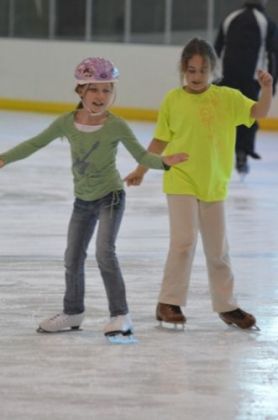What Are Your Summer Plans? Becoming Media Savvy Families
A 2010 study noted that children aged 8 to 18 years watch an average of 4 hours of television and spend 1.5 hours playing video or computer games per day. Children will see an average of 2 gun-related violent acts for every hour of television they watch. As of a decade ago, 40% of the top grossing non-animated G- and PG-rated movies featured at least one character with a firearm and an average of 4.5 armed characters per film. Even current animated films and television often contain some intense scenes with aggressive, if not violent, acts among characters. Often pitched as slapstick humor and “jokes for adults that simply go over a child’s head,” children are exposed to violence, aggression and adult innuendos in animated features as well. Approximately two-thirds of E-rated video games contain intentional physical aggression.

What do we know about the cognitive and behavioral impact of media on child development?
It is difficult for research to keep pace with the advancements in technology; however, years of research on children’s television viewing have produced impactful findings. According the existing research, consumption of violent media predicts increased aggressive behavior among youth because children imitate the scripts they see modeled by others. They can also become desensitized and condoning of violence, believe that the world is hostile, and lose empathy for victims. Longitudinal studies have revealed that 1st and 3rd graders who were heavy viewers of violent television content were three times more likely to be convicted of a violent crime by the time they were in their twenties. Admittedly, violent media is not the only culprit for future behavioral problems, but it does represent a substantial risk factor. Even mass media preys upon our survival instincts by stressing elements that trigger rapid, irrational fear responses through fast paced content, sales pitches that demand immediate response, and by presenting rare violent events as far more commonplace. While younger children may be more frightened by fantasy material, older children are often more disturbed by such realistic content, including the news.

Pre-teens who use social media have been found to value fame more than kindness and community involvement. Video game play late at night reduces the quality of sleep. Periods of downtime (i.e., without the constant demands of Tweets, texts, and Facebook status updates) are necessary for consolidation of learning, which is virtually impossible for youth who have 24-hour access to their smart phones. Other risks of technology use may include reduced empathy and increased stress. Studies have even shown abnormalities in portions of white matter responsible for decision making in brains of adolescents who were “preoccupied” by internet usage (defined as those adolescents who had repeatedly attempted to control their use without success, resulting in restlessness, moodiness, irritability and depression). Overall, studies have shown that youth who spend more than 2 hours per day watching TV or using computers are at increased risk of psychological difficulties.

Technology is so pervasive in our day-to-day lives that it may be difficult, or even unnecessary to go totally “screen-free” for the summer. Many sources argue about the immense benefits of raising tech-savvy children in that they can keep up as adults in the modern world. Thus, I frequently encourage parents to consider technology like a dessert, “okay in moderation.” While some media access is acceptable, if not beneficial, the most powerful protective factor against all the potentially negative effects is parental monitoring. Let’s pay attention to what our children access, how much time is spent with media and encourage them to have a balanced diet of activities for the summer (and beyond).
Helpful Resources to Monitor Your Children’s Access to Media Content
www.imdb.com (database that contains a detailed parent guide for content of movies, television series and video games. Each instance of sex/nudity, violence/gore, profanity, alcohol/drugs/smoking, and frightening/intense scenes is identified).
https://www.commonsensemedia.org/blog/internet-safety-tips-for-elementary-school-kids
http://www.safekids.com/kids-rules-for-online-safety/ http://internetsafety.trendmicro.com/
Consider adopting a media diet:
http://www.huffingtonpost.com/wendy-sue-swanson-md-mbe-faap/tv-for-preschoolers_b_2704097.html
https://www.commonsensemedia.org/research/media-and-violence-an-analysis-of-current-research
http://www.cnn.com/2012/09/23/opinion/gazzaley-mobile-brain/ http://www.i-a-e.org/articles/46-feature-articles/48-the-effects-of-electronic-media-on-a-developing-brain.html http://edis.ifas.ufl.edu/fy1074
http://www.huffingtonpost.com/2013/04/18/social-media-kids_n_3111259.html
http://www.nytimes.com/2010/11/21/technology/21brain.html?pagewanted=all&_r=0
http://www.nytimes.com/2010/08/25/technology/25brain.html?pagewanted=all
http://www.nytimes.com/2010/06/07/technology/07brain.html?pagewanted=all
http://www.nytimes.com/2010/06/07/technology/07brainside.html
https://www.commonsensemedia.org/research/children-teens-and-entertainment-media-the-view-from-the-classroom http://kff.org/other/event/generation-m2-media-in-the-lives-of/
http://pediatrics.aappublications.org/content/126/2/214.abstract
http://pediatrics.aappublications.org/content/early/2010/10/11/peds.2010-1154.abstract
https://www.commonsensemedia.org/research/zero-to-eight-childrens-media-use-in-america
http://pediatrics.aappublications.org/content/early/2011/10/12/peds.2011-1753.full.pdf+html
http://www.psychologytoday.com/blog/the-power-prime/201212/how-technology-is-changing-the-way-children-think-and-focus














